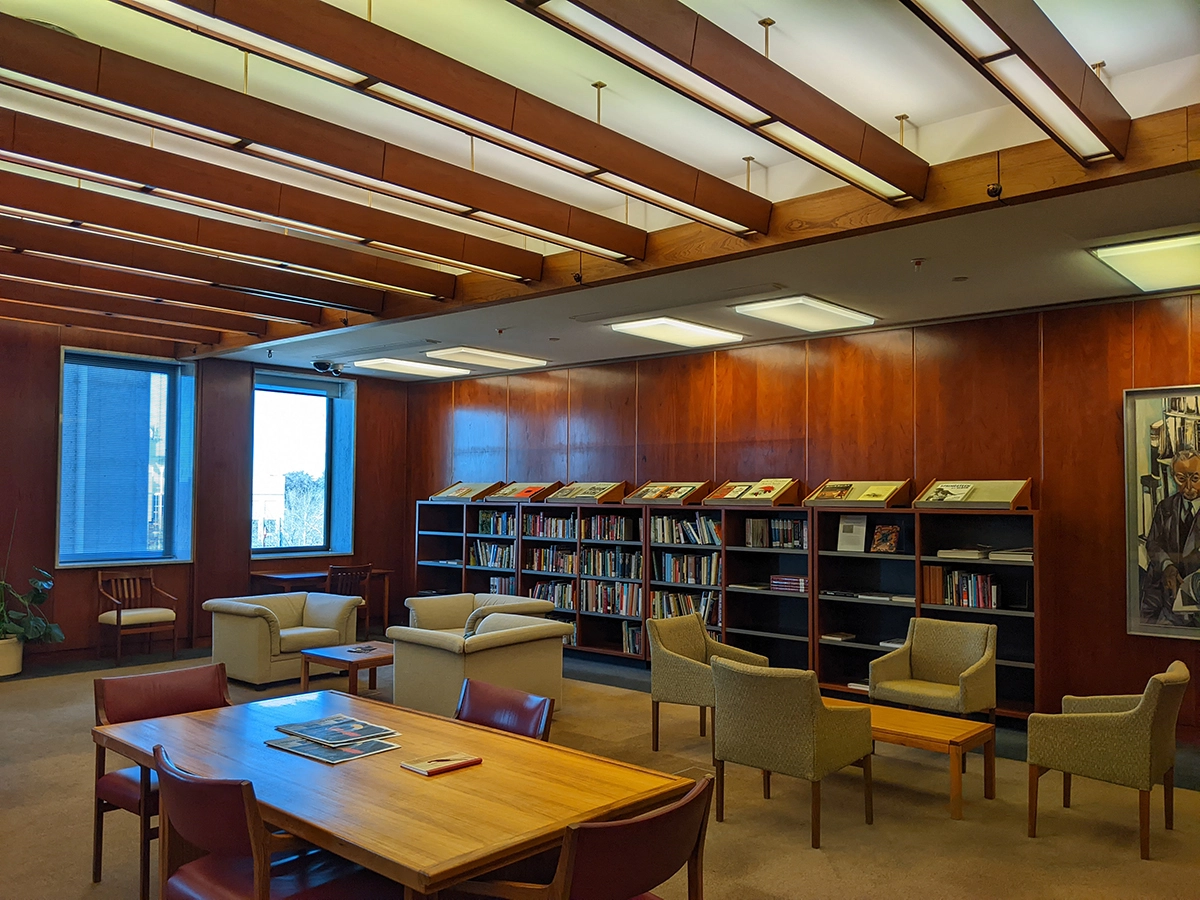
The benefits of conserving heritage interiors – a people centred approach
The interiors of the Modernist Florey Building at ANU, Canberra.
Heritage interiors often hold untold stories that complement the well-protected exteriors of historic buildings, writes GML Consultant Kristine Slawinski. Uncovering and interpreting these layers of history results in a deeper, more complete understanding of a place’s significance and historic value.
It is clear that the community values heritage interiors. Events that offer tours of heritage buildings, such as Open House Melbourne, are a testament to this, often selling out within minutes.
Some significant exterior architectural features of heritage buildings are identified and protected. Yet historic interiors are often overlooked and underappreciated, notwithstanding that they can provide a more complete picture of a place’s history. Interior features may include the spatial volume, the arrangement of rooms and their interrelationships. Interiors frequently contain elements which are rich in art and design history. All these elements work together to communicate the history and use of the place over time. They help us see ‘inside’, into human lives and activities within the building, enriching our understanding of historic values and life in the past.
Acknowledging interiors must support a building’s ongoing functions and use, a carefully considered approach to interior conservation can retain and strengthen connections between people and place. Heritage places are part of a complex interplay of intangible values. This combination of memories, experiences, emotional attachments and social practices can be embodied in the fabric of the place. People often value places which serve different forms of community life, this means that the interiors of buildings such as pubs, churches, town halls, theatres, shopping arcades, and other public buildings are often important.

The interiors of the Queens Hotel in Enmore in Sydney’s Inner West.
A recent study of historic pubs in the Inner West suburbs of Sydney, identified early interior fittings and finishes including original bars. This work provided clarity to owners and local government with a sound rationale for the protection of pub interiors, which were found to be highly valued by the local community.
Understanding the significance of a building’s interior can be achieved via historical research and the recording and analysis of internal features. Architectural plans, sections and elevations, which record the original layout of rooms, joinery and architectural features, along with newspaper and magazine articles, which often exhaustively describe the interiors of newly opened public buildings or architect designed houses. The identification and assessment of important interior elements allows a balance to be struck between practical requirements for ongoing operations, and the retention of heritage significance.
An holistic and people-centred approach to the assessment and protection of heritage buildings, which includes considering the interior as an integral part of a building’s importance, ensures that places are recognised as a living part of community life and identity. Protecting significant interiors can support ongoing use, belonging and emotional attachments to historic places. It can also enrich our understanding and appreciation of life in the past, and contribute to broader environmental and socio-cultural objectives.

Heritage interiors of the National Library of Australia.
